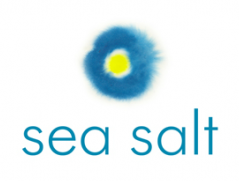The sight sense is connected to the movement sense; the eyes use the movement sense to track the shape and the sight sense to see colour. Our eyes stretch forth their vision like a pair of arms extending and grasping colour and form. The sight sense helps to distinguish between what is being seen and where it is in space and it brings the world to life through colour.
A small child has an inner experience of everything they see. The impression is left within them. The distinction that happens at maturity is the ability to differentiate between the images that are on the outside and those on the inside. The ability to filter external sensory impressions and be able to discern that what we are looking at is outside of us, means we are not inundated by the images.
Hyper sense of sight
For a person with a hyper sense of sight, bright colours and light can cause discomfort, perhaps causing pain and ill health in other parts of the body. Intense images impress deeply and can be difficult to overcome.
In the classroom, the child may be overpowered by whiteboards and videos, unable to hold their behaviour, becoming overstimulated, exhausted, or perhaps nauseous. Their dreams can be affected by what they have seen in the day, and traumatic events or images could remain undigested for years, being reflected in nightmares. They are likely to also have favourite imagery or a theme with which they fill themselves with regularly, and possibly repeat snippets from movies over and over -.the external image creating an inner reflection and movement that they take great pleasure in.
Hypo sense of sight
Having a hypo sense of sight means the person is less able to define colour gradients. And although colours and images penetrate them the hypo sensitive person does not easily register the effect through their sense of sight.
Having a hypo sense of sight means the person is less able to define colour gradients. The child may need more detail and living colour in the visual images or to be closer to the front to stimulate their sense of sight and interest to help grasp the picture. They may choose to experience and wear bold, dull, or intense imagery, without realising the impact it has on their inner life as well as other people. Their behaviour can therefore reflect the images that have crossed into their inner life unnoticed.
How to harmonise and support the development of the sight sense
Retaining joy and wonder in each task opens up more of the world to our vision. The subtle but dramatic changes in nature, such as with the rising and setting of the sun can help us to experience the relationship of what we see, and what lives in us. Observing nature in real life nourishes the sight sense whereas viewing it on a screen with artificial penetrating light can cause the natural process to deteriorate. Gentle colours with soft edges are nourishment for children under seven years old, and from the seventh year they have greater ability to process more defined forms. This can be applied to architecture, furnishings, wall colours, clothing and the activities that are offered.
The world is a colourful and exciting place as a young adult when we have been nourished with a social life that is warm, tasteful and true.
Chalkboard drawings created by hand that are full of colour and detail tell a story and invite the eye to move across the landscape and into the shadows without being over-penetrated by the light.
The application of chamomile over the abdomen can help calm the nervous system and pain from overexposure to light.
